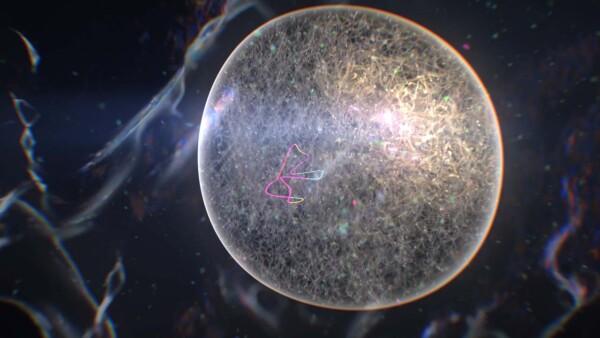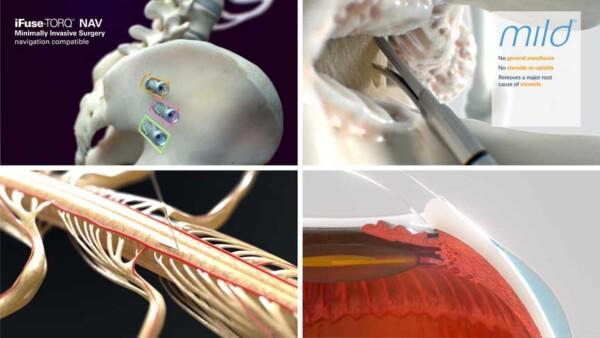
The Power of Scientific Communication in Contract Research Organizations: Why Medical Animation Matters
By: Olivia Slayden
In the world of science, discoveries and innovations are continuously unfolding. These advancements can improve lives, cure diseases, and solve complex problems. However, these benefits can only be fully realized if the findings are effectively communicated. This is where the importance of scientific communication, particularly medical animation, becomes evident.
Contract Research Organizations (CROs) stand at the forefront of medical innovation, developing new drugs, treatments, and medical devices. An effective scientific communication strategy can significantly enhance their impact by ensuring that complex research findings are conveyed clearly and accurately to diverse audiences. This not only fosters better understanding and collaboration among scientists, regulators, healthcare professionals, and the public but also accelerates the approval and adoption of new medical advancements.
By investing in robust scientific communication methods such as medical animation specifically for Contract Research Organizations, these companies can streamline their operations, build trust with stakeholders, and ultimately drive greater success in their research endeavors.
What are Contract Research Organizations?
Contract Research Organizations are companies that provide research services to the pharmaceutical, biotechnology, and medical device industries. They play a crucial role in developing new drugs, treatments, and medical devices, handling everything from initial research stages to clinical trials and regulatory approval.
The Role of Scientific Communication in Contract Research
Effective scientific communication is essential for CROs. It involves sharing research results and innovations in a way that is clear and easy to understand, reaching a variety of audiences with unique needs and expertise, including scientists, regulators, healthcare professionals, and the general public. Strong communication ensures that research findings are applied in real-world scenarios and enhances public understanding.
Benefits of Effective Scientific Communication for Different Audiences
1. Scientists:
When communicating with other scientists, the information needs to be detailed and precise. Scientists look for data and evidence that support research conclusions. Clear communication ensures that findings are accurately shared and can be built upon in future research.
2. Regulators:
Regulators require comprehensive information that follows specific guidelines to ensure compliance. They assess the safety and efficacy of new drugs and treatments based on the data provided. Effective communication of your science with regulators helps streamline the approval processes for new medical products.
3. Healthcare Professionals:
Doctors, nurses, and other healthcare providers need information that translates complex research into practical applications. Simplifying your complex research into practical applications will help these healthcare providers understand new treatments and make more informed clinical decisions for their patients.
4. General Public:
For the general public, scientific communication should simplify complex concepts without losing the essential facts. This audience benefits from explanations that relate directly to their experiences and concerns, such as how a new treatment could improve health outcomes. Effective scientific communication fosters better understanding and trust in scientific advancements.
This targeted approach in scientific communication is particularly important when CROs collaborate with pharmaceutical companies, regulatory bodies, and healthcare providers. It ensures that all stakeholders are on the same page, leading to more efficient and successful outcomes in medical research and development.
Scientific Communication Methods Used by Contract Research Organizations
CROs use several scientific communication methods to ensure their research is clear and actionable. Here is a brief overview of some of those methods.
1. Medical Animation:
This tool visualizes complex scientific processes in an engaging and straightforward way. It is particularly useful for explaining drug mechanisms and biological interactions. Medical animation is also particularly useful when complex scientific information must be absorbed in a short amount of time.
2. Scientific Publications:
More commonly, the clients of CROs, like pharmaceutical companies, are the primary publishers of research findings. There are some instances, however, when Contract Research Organizations publish findings in scientific journals.
3. Conference Presentations:
CRO scientists may present their findings at conferences. These events allow for direct communication with peers and provide opportunities for feedback.
4. Regulatory Documents:
CROs prepare detailed documents for regulatory bodies. These documents must clearly explain the research, findings, and product safety to ensure compliance and approval.
5. Patient Education Materials:
CROs create materials to help patients understand their treatment options. These materials explain drug actions, side effects, and clinical trial details in understandable language so that patients can give informed consent for their participation in any clinical study.
6. Infographics and Brochures:
For quick and broad information dissemination, CROs may use infographics and brochures. These tools simplify complex information for easy understanding by a non-specialist audience.
These diverse communication methods ensure that scientific information reaches various audiences efficiently. Through these efforts, CROs significantly contribute to medical science and public health advancement.
The Impact of Medical Animation in Scientific Communication
Medical animation is an especially effective way to communicate complex scientific data. These animations turn complex concepts and processes into understandable and engaging visual content like no other form of media to date. They are particularly beneficial in several ways:
1. Enhancing Understanding:
Medical animation simplifies complex biological processes or drug mechanisms into animated sequences. These sequences are easier to understand than static images or text-heavy documents.
2. Increasing Engagement:
People generally engage more with visual content than text. Medical animation captures attention and makes learning about scientific topics more interesting.
3. Improving Retention:
Visual content is not just engaging; it’s also memorable. People remember information better when it's presented visually.
4. Facilitating Communication:
Medical animation can act as a universal language. This scientific communication tool bridges gaps between scientists with different specializations or between technical experts and non-experts.
Challenges in Scientific Communication
Scientific communication faces several unique challenges not typically found in other forms of communication.
Complexity of Information:
Scientific research often involves complex data that can be difficult to explain in simple terms. Contract Research Organizations must convey complex data in an accessible way without oversimplifying or misrepresenting the facts, balancing clarity with scientific integrity.
Audience Diversity:
Communicators in scientific fields must address the needs of a highly diverse audience. This includes experts who need detailed information and the general public who may need basic explanations devoid of jargon.
Misinformation:
Clear scientific communication in today's fast-paced digital world is more crucial now than ever. Information spreads quickly, and not all of it is accurate.
We've all seen the destructive power of this misinformation, especially in our post-pandemic world. It not only causes public confusion, but also undermines trust in scientific findings.
Contract Research Organizations, like other scientists and researchers, can work to correct misconceptions by providing reliable information through reputable channels. Addressing these challenges head-on is essential for the successful application of scientific discoveries and for maintaining public trust in science.
Last Thoughts
For a Contract Research Organization, effective scientific communication is essential. Tools like medical animation are not just nice-to-have; they're necessary. They ensure that scientific breakthroughs are accurately understood and properly utilized, building trust with stakeholders and helping new treatments and innovations reach the market efficiently and safely.
Investing in a strong scientific communications strategy allows CROs to enhance their research impact. As science advances, the role of effective scientific communication and innovative tools like medical animation will only grow in importance, turning complex scientific ideas into actionable medical solutions.
If you operate a Contract Research Organization and have had difficulty communicating your complex science to stakeholders, medical animation may be your next step.
Microverse Studios is an award winning scientific communications company that has been telling complex scientific stories, including those specifically for Contract Research Organizations, since 2005. Reach out for a quick 15-minute call to find out if medical animation fits your scientific communications strategy.
You might also like

As Co-Founder and Chief Commercial Officer at Microverse Studios, Olivia Slayden brings her innovative perspective to the team, constantly challenging the status quo to differentiate Microverse Studios in a competitive medical communications landscape. She is recognized for her strategic thinking, attention to detail, and creative problem-solving. In her spare time, Olivia loves staying updated on industry trends and sharing her insights through the Microverse Studios blog.



